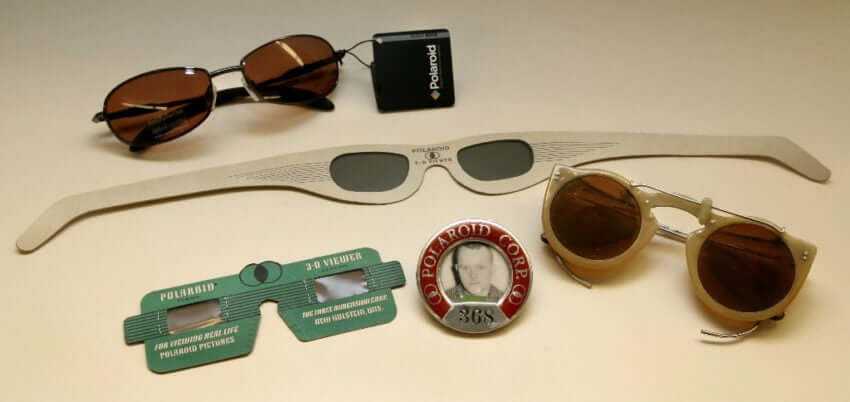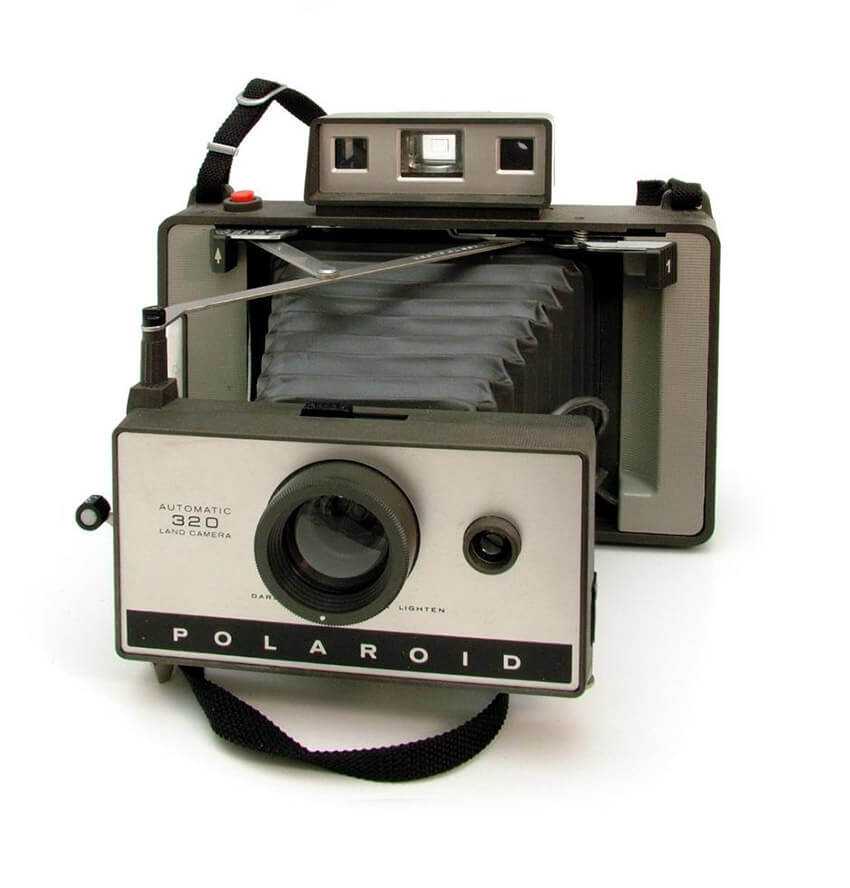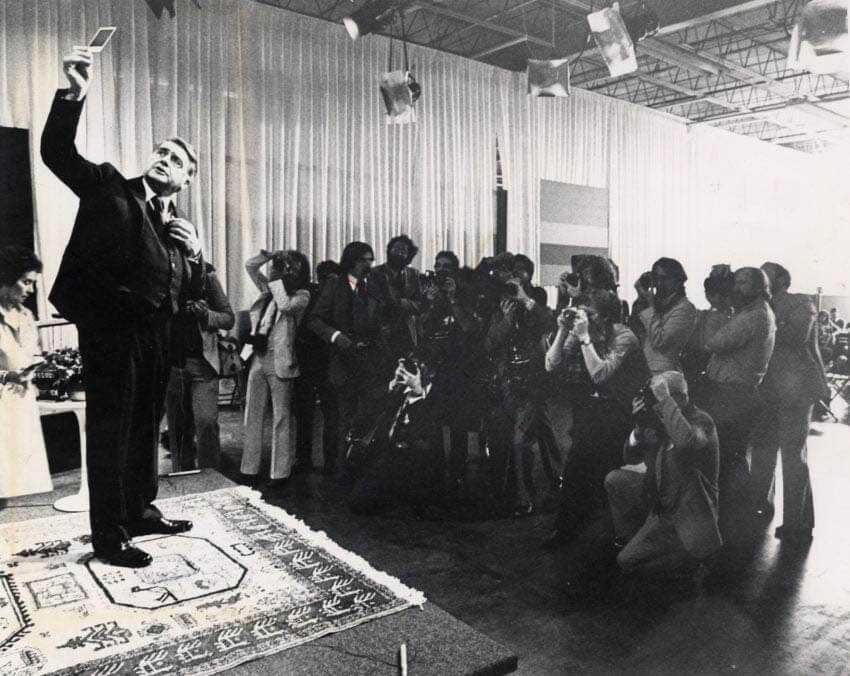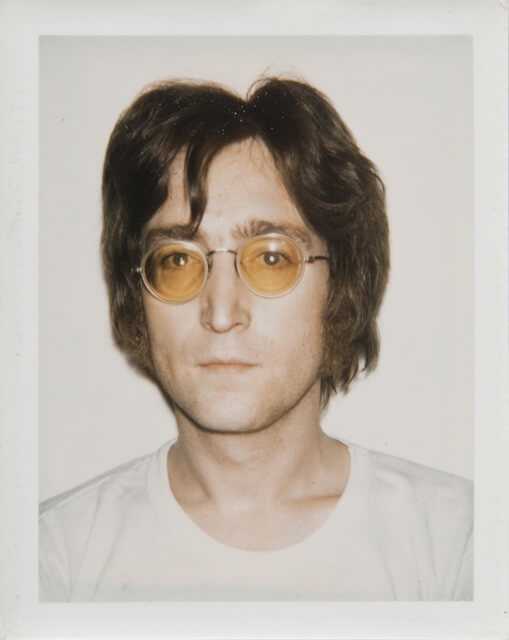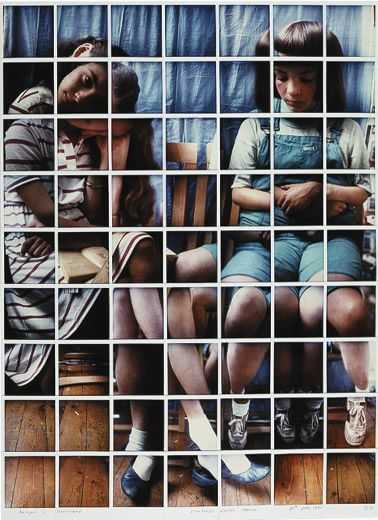Product Fun Facts - Polaroid
Product Profile
Name: Polaroid Instant Camera
Founder: Edwin H. Land
Manufacturer: Polaroid
Category: Photography
Launched: 1948
Lifespan: ~72 years (with a break in-between)
Units Sold: TBA...
Fun Facts
Enabled On The Back of Sunglasses
The Polaroid company got its start in 1937 selling polarized sunglasses. From this, the company then moved into photography equipment including polarizing filters for cameras.
Kodak was one of Polaroid's early customers for these polarizing filters. This became a prelude into Polaroid developing capability which it would later use in the photography product space.1
Helping in the War Effort
Polaroid designed and manufactured numerous products for the United States armed services during World War II. These included a night viewing device and coloured filters for rangefinders and periscopes. This further developed Polaroid's capability in lens manufacturing.1
An Idea Sparked By a Three-Year-Old
In 1944, Polaroid's founder Edwin Land was taking a photo of his 3-year-old daughter, Jennifer, while they were on a family holiday in California. At the time, Jennifer asked her Dad, Land, why she could not see the picture he had just taken of her.
Land was excited by this idea. Imagine a camera where you didn't need to go through the waiting time, hassle and mess of developing film in a dark room to see the picture! Land immediately took this idea to his team back at Polaroid to work on.5
Five Years to Create the Initial Product
It took polaroid scientists and engineers nearly five years to turn the idea into an actual product that could be sold to the public. It was essentially a complicated puzzle that involved combining a camera, film and processing chemistry into a portable handheld format.
In essence, instant photography packs all the operations of a darkroom inside the film-sheet and camera body itself. The film-sheet has to catch light from a camera lens, turn it into a negative image, then reverse the image and make a positive one. It has to start the process at the right time, end it at the right time, and make sure the image lasts.1
Astonished Crowds
The initial product was ready for the public in the fall (autumn) of 1948. It was named the Land Camera and was priced at $89.95.
The launch took place the day after the United States Thanksgiving holiday in 1948. A demonstration was run by a Polaroid sales and demonstration crew at a department store named Jordan Marsh in the US city of Boston.
Customers witnessing the demonstration were absolutely astonished at seeing instant photos being made for the first time. As a result of this excitement and buzz, cameras flew off the shelves. The demonstration ended early when the entire stock of cameras sold out.2
The Lucrative Consumables Market
With the launch of the instant camera, Polaroid found itself in the enviable position of having a customer base with highly inelastic demand for a must-have consumable.
In order to be of any use, the camera required the inclusion of special film-sheets coated with photographic chemicals. For each photo taken, one of these sheets would then be developed on the spot into a photograph that could be seen immediately.
These film-sheets were priced at $1 each and produced huge profit margins for Polaroid. The company essentially had their own monopoly market by default due to owning the patent rights and there being no competitors.1
Before There Was Instagram, There Was Warhol
Throughout the 1960's, Polaroid would regularly provide renowned artists with cameras, free film and studio space. The artists would each be told...
Have a ball. When you are finished, please give us a few prints, which we will include in our corporate collection.
Among the artists was a guy named Andy Warhol.
Warhol's work with polaroids in particular has become an icon in the pop-art world.3. In the 1970s and 1980s, he would paint vast numbers of celebrity and society portraits. These portrait sittings always started with Warhol shooting dozens of Polaroid photos.4
The Polaroid Artists Collection grew to over 16,000 prints. It showcased the work of world-famous artists including Andy Warhol, Ansel Adams, Phillipe Halsman, Mary Ellen Marks, Robert Mapplethorpe, Robert Rauschenberg, Inge Morath, and Margaret Bourke-White, just to name a few.
Batteries Not Included
Most Polaroid cameras didn't require you to load them with your own batteries. They instead got their power from a small battery that came with the disposable cartridge that held the film-sheets. This small battery had just enough juice to power the camera so it could take the same number of shots as film-sheets included in the cartridge.
Holding Off The Competition
During the 1960s and 1970s, competition for sales of instant cameras picked up steam. As the market grew, new players continued joining in. Despite this, by 1977 at the height of its popularity, Polaroid held two-thirds of the instant camera market. More than six million Polaroid cameras were sold that year.
Polaroid fought a long-running battle in the courts with Kodak in relation to patent infringements. After 10 years, the court ruled in favour of Polaroid, ordering Kodak to cease instant picture production and pay damages of $909.5 million.12
Falling Into the Success Trap
A success trap is where a business rests on their laurels and focuses only on the exploitation of their historically successful current business activities. They don't explore new ideas or products. As such, they eventually fade away and the market for their product disappears, along with the value of the business itself.7
Polaroid is a classic example of a company falling into the success trap. The market for instant cameras began to decline in the late 1970s as smaller point-and-click film-roll cameras started growing in popularity. This downward trend for instant cameras continued in the 1980's as portable video cameras started becoming widely available.
Unfortunately, this period coincided with the death of Polaroid's founder, Edwin Land. He passed away in 1991 at the age of 81.
Polaroid attempted to make up ground in the 1990s by expanding into other markets. However, by that point it was stretching itself thin and it never really gained a foothold in any of the emerging markets.
In October 2001, Polaroid filed for bankruptcy and the initial run was over.
The Instant Photo Revival
Throughout the early 2000's, Polaroid underwent many restructures via numerous corporate holdings. It has, remarkably, been able to hang on during this period.
As of March 2020, you can still purchase Polaroid instant cameras. The offerings cover a few styles ranging from remade vintage models to the current flagship model, Polaroid Now.8
The Polaroid Look
There is an unmistakable look to a photo taken with a Polaroid camera. You'd know it when you saw it. It is the one where the photo looks a bit faded, the colours are slightly washed out, and there is sometimes a dark shadow in the image.
Writer and photographer Dan Finnen has some good examples of the Polaroid look in an article on his website.9
This is a style that is ingrained into the memories of anyone that looked through physical photo albums at some point during their life.
The nostalgic feelings and memories that are triggered by the Polaroid look are so powerful that many new digital camera and photo companies have latched onto it. Pretty much every phone-camera and photo sharing app these days has a filter you can apply that gives your shots that Polaroid look.
Shake It Like a Polaroid Picture
Last but not least, I couldn't do a story about Polaroid without paying homage to André (Ice Cold) 3000 and The Love Below.
You know what to do-ooh-ooh...
References
[1] https://www.boston.com/uncategorized/noprimarytagmatch/2012/10/03/history-of-polaroid-and-edwin-land
[2] https://www.massmoments.org/moment-details/polaroid-wins-patent-suit-against-kodak.html
[3]: https://www.taschen.com/pages/en/catalogue/photography/all/43433/facts.andy_warhol_polaroids.htm
[4] https://garage.vice.com/en_us/article/wj48y4/andy-warhols-polaroids-are-his-most-influential-works
[6]: https://dp.la/exhibitions/evolution-personal-camera/polaroid-era
[7]: https://onlinelibrary.wiley.com/doi/10.1111/1467-8551.12066
